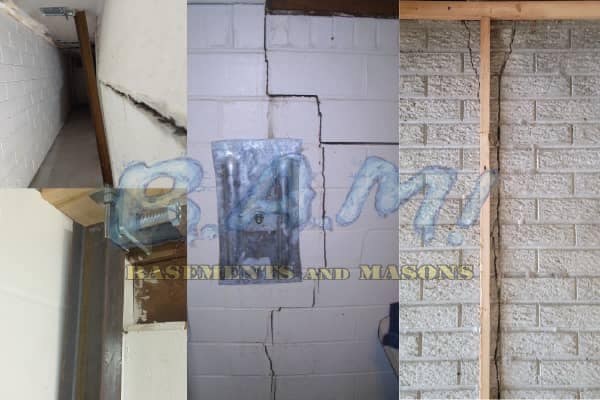Learn The Best Way to Repair a Bowed Wall?
Bowing walls are basement or retaining walls that curve inward, causing water leakage, cracks, and a weakened foundation structure. With bowing walls, the plumb line will fall outside the wall’s center of gravity. In other words, it will fall outside the middle third of the wall. Bowing walls are caused by a variety of things. Most of the time, a bowing wall is caused by hydrostatic pressure. This pressure develops when the soil around your house is saturated with water. The soil expands and pushes against your foundation.
A bowed wall is a critical concern, it can threaten the structure of your home. Your entire home is relying on the strength of your foundation. If a bowing wall is not repaired, it will eventually collapse. When a foundation wall collapses, your home suffers severe structural damage. Your home is now open to the elements such as rain, mud, wind, debris, rodents, and pests. Once the main floor of your home is no longer adequately supported, walls in the rest of your home will lean, floors will droop, pipes will be strained and bust, your home will no longer be safe to live in and your foundation will need to be rebuilt. You do not want to wait if you have any signs of bowing.
Recognizing Bowing
So how do you know if your walls are bowing? Recognizing bowing in foundation walls can be difficult. That is if you don’t know what to look for. There are various signs and symptoms that indicate your foundation walls are bowing. The following are some of the most common signs in:
Signs of a Settling Foundation
-Settlement Crack
-Floors that are not level
-Doors, windows, and cabinets that do not shut properly
-Cracking in the upstairs plaster and/or drywall
-Cracking in exterior brickwork and/or caulking
-Leaning of outside chimneys and/or porches
-Wall tipping (horizontal crack running the length of the foundation way)
Signs of a Bowing Wall
-Horizontal Crack
-Leaning or Tipping inward often forms at grade level
-Wall line is not straight when looking from corner to corner
-Vertical crack 8” or so from corner or outside of foundation wall
-Stair step cracking in Mortar joints
-Attempts to hide cracks with oversized mortar joints, caulking or other fillers
-If finished, the studs, sheetrock are set far off from the existing foundation wall. A good way to see this is in window areas. Finished walls should be approx. 5” in from foundation wall and all returns to foundation should be consistent from top to bottom.
If you find your foundation walls are bulging, they may be at the risk of collapse. Do not delay in seeking expert advice on foundation repair in this situation!
How to Repair a cracked or bowed wall?
The most effective way to repair a bowing wall is to use PowerBraces on the wall itself. These are steel I beams that are set against the wall and anchored to both the basement floor and to the floor joists. The I beams help stabilize the wall and prevent further inward movement. With seasonal tightening of the PowerBraces sometimes complete recovery can be achieved.
Here at BAM Basements and Masons of Des Moines our main priority is to stop the bowing problem in the area we address. That is why our clients rely on us. If the wall requires more than just PowerBraces to correct the bow, we can excavate around the perimeter of the home to relieve the pressure and literally push the wall back into place from the inside, installing the PowerBraces at that time. In some cases, the wall is beyond bracing and the foundation wall needs to be replaced.
BAM Basements can send an expert out to your home and make a proper assessment and help guide you to the proper fix with you.


Thanks for explaining how the structure of a home can be threatened by a bowing wall because it may collapse very soon. My mom has noticed what she thinks is a bowing wall in the far southwest corner of her home, and she is really concerned about it. She would really like to get a professional to improve the structural security by having the foundation repaired.